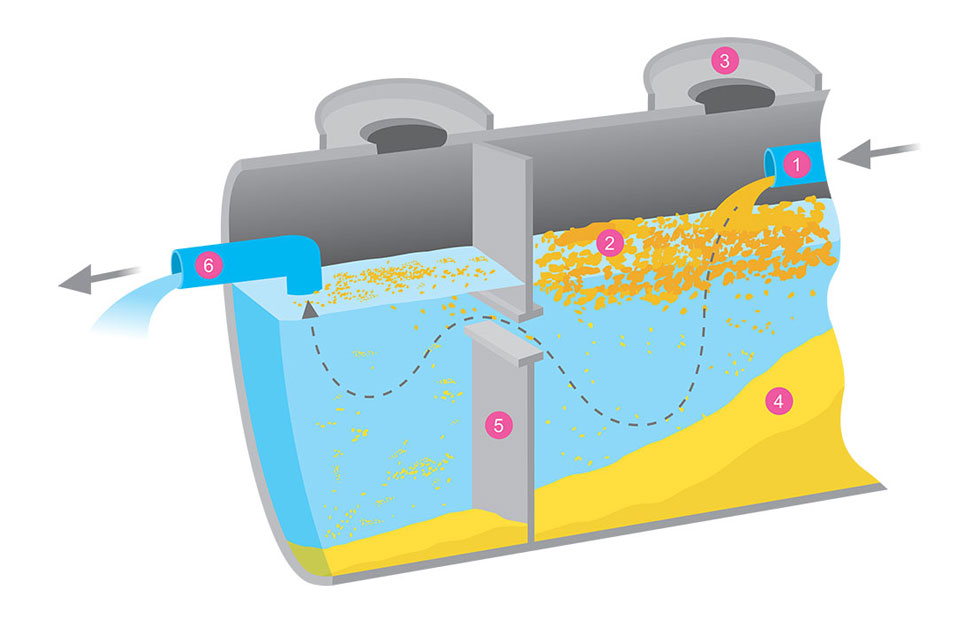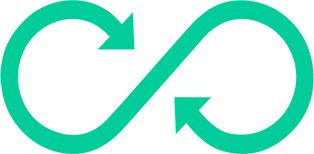In today’s post, we’re looking at grease traps and why every foodservice business needs one.
Straight off the bat, it’s essential to know that if you don’t have a good grease maintenance plan, you’re putting your business’s reputation at risk. Not to mention the legal repercussions for not following your state’s Fats, Oils, and Grease (FOG) regulations.
The EPA estimates that there are 23,000 – 75,000 sanitary sewer overflows (not including backups into buildings) each year with grease being a major cause.
But, with some planning up front (and a functioning grease trap or interceptor), you’ll see how easy it is to manage your restaurant grease and comply with FOG regulations.
What is a grease trap?
Let’s start with the basics: What is a grease trap? And why does my restaurant need one?
Grease traps are devices that your kitchen wastewater flows through on the way to the sewer. These devices separate grease and other fatty waste from the water before it can reach the sewer. Grease traps can also be called grease interceptors, and while they are not the same, they do the same job.
Whether you need a grease interceptor or grease trap will depend on your business’s size and the amount of grease and fatty waste you regularly produce.

There are different types of grease traps/interceptors, but your standard trap has two chambers. As your kitchen wastewater flows through the first chamber, it captures the grease. Once it solidifies, it will float to the top of the first chamber, allowing the clean water to flow into the second chamber.
What businesses need to have a grease trap installed?
- Any restaurant or take away outlet
- Bakeries and cafes that bake their good on the premises
- Shopping centers with food outlets
- Mobile food outlets
- School and colleges
- Catering companies
- Food manufacturing facilities
- Convenience stores
- Hospital and nursing home kitchens
From the list, you can see that pretty much any business that produces fats, oils, and greases in large quantities must install a grease trap or interceptor. High volume grease producers such as hotels and hospitals typically require a grease interceptor. Low volume foodservice establishments such as fast food outlets or mobile takeaways need a grease trap.
What type of grease trap do I need?
Installing the right grease trap or interceptor is important to avoid any long-term problems. Grease traps are small volume tanks that can be installed at different locations throughout the kitchen.
Some typical locations for indoor grease traps include:
- Pot sinks
- Rinse sinks
- Food prep areas
- Food storage areas
- Floor drains and sinks
- Automatic hood washers
Outdoor grease interceptors on the other hand are large and usually installed outside in the ground.
The type you choose will depend on the amount of grease and fatty waste your kitchen produces. Be sure to consider the size carefully if you are changing or installing a grease trap for the first time.
The main type of grease traps
Hydromechanical grease traps are smaller. They are usually found in fixtures or close to the point of use. These grease traps use a series of baffles to collect the grease and prevent it from flowing from one end of the system to another. Once the grease cools, it will accumulate at the top of the trap above the water, allowing you to clean it out.
These traps are the most common due to their relatively low price and how easy they are to install.
Gravity grease traps are large and typically found outside or underground. As the name suggests, they use gravity to drain the water and are recommended for large restaurants. These traps require grease waste to be pumped out into a truck and hauled away.
Automatic grease removal units are the most expensive type of grease trap. They use a blade to remove the grease to a separate container automatically.
How much do grease traps cost?
Grease control devices range in cost based on type and size requirements. The cost of replacing a grease trap also depends on its current location. Many old buildings have traps located underground, requiring removal before starting any plumbing work.
If you are installing a new grease trap and have the option, install it outside as this will make it easier to maintain and replace it in the future.
How often do I need to clean my grease trap?
Grease devices fill up fast, so you must have a regular cleaning and maintenance schedule. As the grease trap fills up, it becomes less effective at preventing grease from getting into your pipes.
It would be best if you got your grease trap cleaned regularly – how often will depend on the size and the amount of grease you produce in your kitchen. You can get a rough idea of the grease amount by checking your trap every day for a week and seeing how quickly grease builds up.
A good rule of thumb for grease trap cleaning is every 1-3 months. You’ll find that most local wastewater authorities require restaurants to clean their traps at least four times a year. But be sure to follow the recommendations of your local regulator.
Since a commercial kitchen produces so much grease waste, almost every town or city has a FOG program. Inspections are also carried to ensure businesses are maintaining their grease control devices.
Note that the longer you leave it between cleanings, the more chance the grease will harden and be far more challenging to remove – increasing the time required and price. The effectiveness of the trap also diminishes as it fills up with grease. Regular cleaning will keep your grease trap performing effectively and reduce the chances of costly blockages.
How long do grease traps last?
Grease traps can last up to 20 years, but a lot depends on your cleaning frequency. Trap damage will occur over time due to the nature of repeated cleanings. If the inside gets dented or the main wall becomes dislodged, the trap will stop functioning, requiring a change.
Grease Trap warning signs
There are several ways in which your grease trap can stop functioning. Blockages of the main pipe connecting the first and second chambers are the most common. This type of backup could result in grease flowing into the sewer system. Similarly, a blockage in the outgoing line will result in a grease trap overflowing.
If your trap becomes clogged, your first sign will be the smell of grease and oil, which lingers in your kitchen. If this occurs, check your device immediately as the problem will only worsen, and your customers will start to notice the foul odor.
As the blockage worsens, you will get grease trap overflows, and FOG will start to reach the sewer. Over time the grease will build up and result in sewer overflows.
As I mentioned earlier, grease is one of the leading causes of thousands of sanitary sewer overflows across the country each year.
How SwiftQuote Helps
At SwiftQuote, we run an online directory that connects businesses like yours with approved grease haulers. You can submit a free request for service quotes from all of the suppliers in your area through the app.
Not only that but when you book a grease cleaning with SwiftQuote, we will automatically submit job details to the regulator on your behalf. You can also set up recurring services based on your cleaning schedule.




